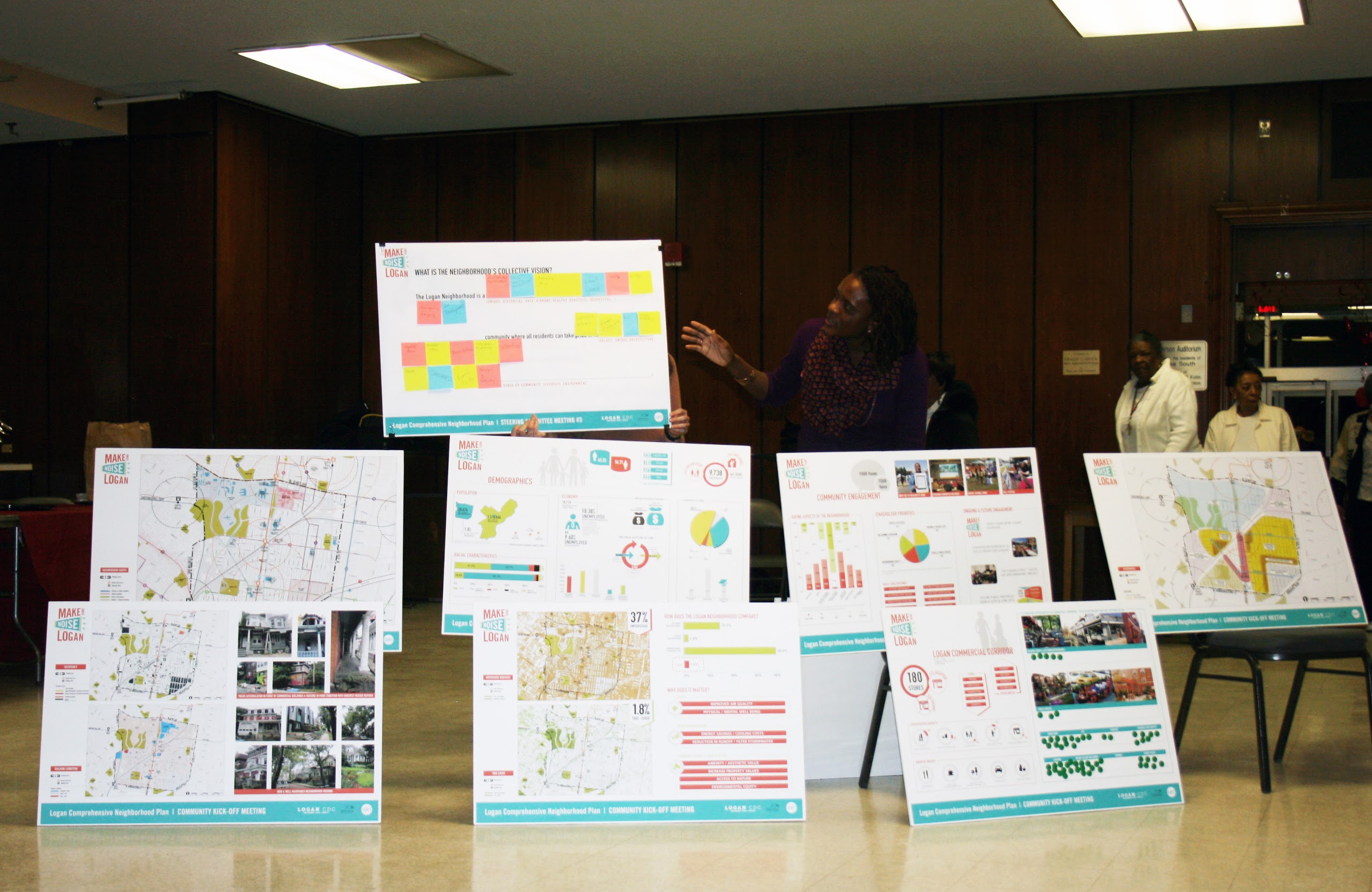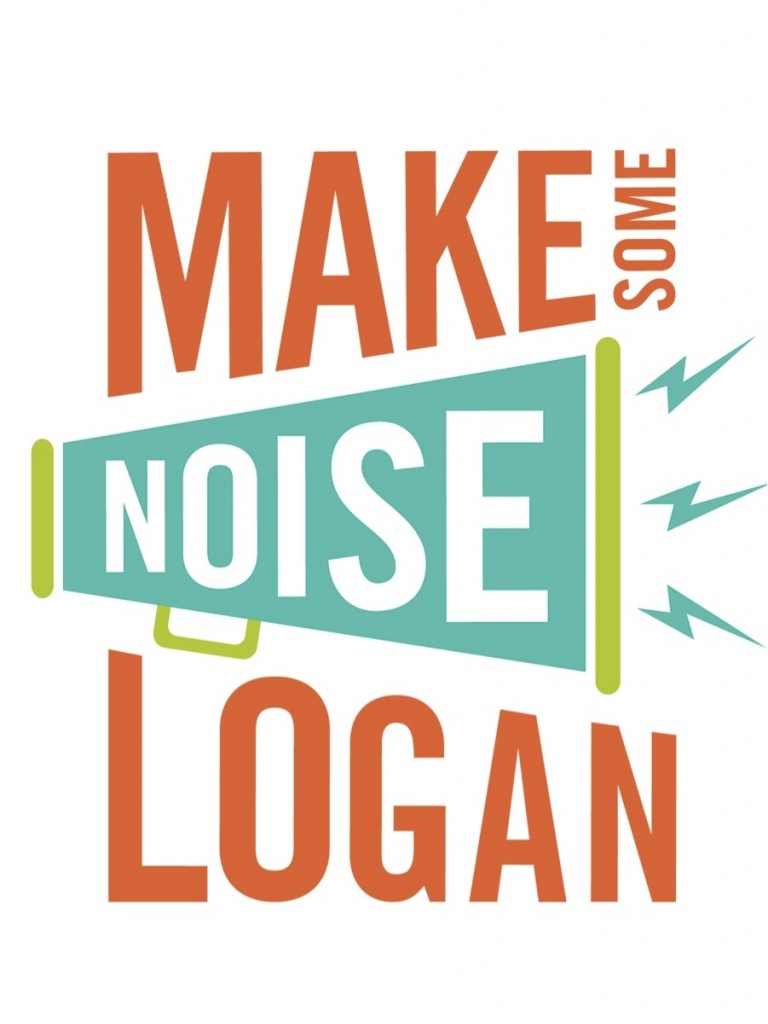Planning Logan: Empowering Logan residents through neighborhood planning

As part of their reporting for Philadelphia Neighborhoods and PlanPhilly, Emily DiCicco and Anthony Liberto are sharing dispatches from Logan and Olney. For their final installment, here’s part two of their two-part look at the importance of the resident-driven planning process underway. Read part 1 here.

A neighborhood plan is created to solve the physical problems of a community. In Logan, the Logan CDC, along with planning firm Wallace Roberts & Todd (WRT), is looking to address issues including a lack of safe areas for children to play in the community and a shortage of fresh produce in the area. However, just as importantly, they are using the plan to tackle the sense of helplessness in the community and to empower residents.
“Our theme for the plan is ‘Make Some Noise, Logan,’ for the community that feels forgotten and feels abandoned without any city resources or support,” said Garlen Capita, a WRT staff member working with the CDC on the plan.
“The long term strategy is to focus on the small things, the action that the community can take on themselves,” Capita said.
Earlier this year, the Logan CDC was awarded a $10,000 Neighborhood Planning Grant from Wells Fargo Regional Foundation.
“Wells Fargo Regional selects neighborhoods to receive grants in a competitive process based on areas that most illustrate the need for a complete revitalization and where Wells Fargo feels that they can make the greatest impact …” said Kimberly Allen, Wells Fargo’s regional vice president and senior program officer.
“Our biggest requirement is that these plans are resident driven and show the priorities and the greatest needs of the communities,” Allen said.
To ensure that the plans are resident driven, Wells Fargo provides neighborhoods with comprehensive Resident Surveys, which allow the neighborhood’s biggest stakeholders, the residents, to give input on the community’s problem areas. The neighborhood agencies—in this case, the Logan CDC—are also required to hold community meetings for residents to voice their opinions.
The Logan CDC is currently in the process of completing these Resident Surveys.
After the surveys are complete, the planning committee and the Logan CDC will finalize a plan, which will then be submitted to Wells Fargo for review. If approved, the Logan CDC could then receive an additional Implementation Grant, to be used for long-term goals over the next five years. If a neighborhood receives an Implementation Grant, it is required to provide milestones and output grids so that Wells Fargo can track its success, using follow-up Resident Surveys as a guide.
Using the Resident Surveys taken so far, WRT has come up with a rough roadmap for the neighborhood plan. Despite failures of the past and neighborhood dissatisfaction, vacant lots will not be a main feature of the plan, though they will be addressed.
“We want to take the larger focus off of the Logan triangle and put the emphasis on other areas in Logan, such as the Northwest,” Capita said.
For example, part of the plan may include the development of a “model block” in the neighborhood. This block, which would be remodeled to include trees and be kept clean and free of litter, would serve as an inspiration to residents across Logan as to what their own blocks could look like, and hopefully serve as an incentive to beautify their own areas.
Additionally, WRT is looking to put in more traffic signs in the area and signs to slow down traffic, especially in areas with children, to address speeding issues and safety concerns for children.
Similarly, WRT is looking into supervised recreational activities for the area, a program which it has used while creating Camden’s neighborhood plan.
“In Camden, people won’t even go to the playground that’s across the street from them because it’s just not safe,” Capita said.
Supervised activities allow parents to feel comfortable allowing their children to play in the areas.
Some of the other areas that WRT is looking to address in the plan include creating a system for residents to report crime in the area and increasing access to fresh produce through urban gardens and farmers’ markets.
However, aside from the changes that will be outlined in the plan, WRT is working to connect the Logan CDC and residents with other agencies and programs in the city, which can provide support and resources.
“We want to connect with neighborhood organizations and civic agencies that Logan can use for their benefit and improvement, such as the Philadelphia Housing Authority, for homeowners to receive loans to repair their houses or to make their houses more energy efficient,” Capita said.
The end goal is a plan that will not only address and solve the problem areas in the neighborhood but will rejuvenate the community. They plan to unveil the plan on Let’s Love Logan day, which is slated to take place in July, but has not yet been finalized.
— Emily DiCicco and Anthony Liberto, Philadelphia Neighborhoods
This spring Emily DiCicco and Anthony Liberto are bringing Eyes on the Street and PlanPhilly stories from Logan and Olney as part of their work for Philadelphia Neighborhoods, a publication of Temple’s Multimedia Reporting Lab. PlanPhilly is a Philadelphia Neighborhoods partner.
WHYY is your source for fact-based, in-depth journalism and information. As a nonprofit organization, we rely on financial support from readers like you. Please give today.




